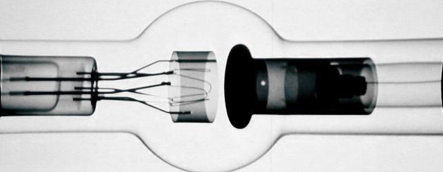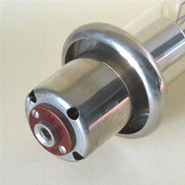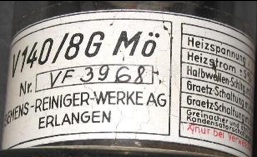Siemens V 140/8G Mö Kenotron
Ref. G4






This tube is 14” (35 cm) long. It is an early oil-immersed kenotron, dating probably to the thirties of last century. Note the shape of this kenotron, inspired from that of earlier air-cooled kenotrons and early hot cathode X-ray tubes. Its shape is equally reminiscent of the early PANTIX, the first rotating disc-anode X-ray tube introduced by Siemens in 1933.